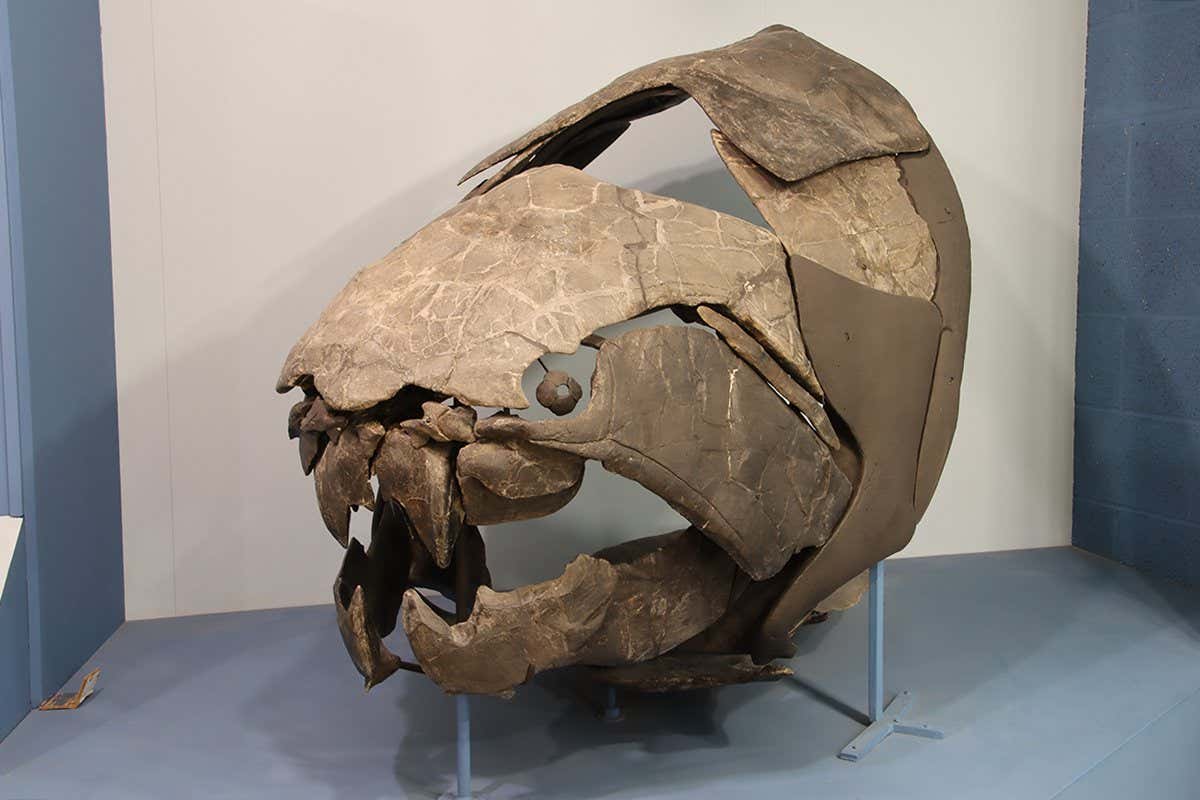Rewriting History: The Truth About Ancient "Megafish"
For decades, the image of colossal, prehistoric fish has captivated our imaginations. Whispers of "megafish," creatures dwarfing even the largest modern sharks, have filled paleontological circles and fueled countless documentaries. But the truth behind these ancient giants is more nuanced, and often more surprising, than the sensationalized narratives suggest. This article delves into the latest research, separating fact from fiction in the captivating world of ancient megafish.
Unraveling the Legends: The Leedsichthys Controversy
One of the most famous examples of these alleged megafish is Leedsichthys problematicus. Often depicted as a behemoth rivaling the size of a blue whale, recent studies are challenging this long-held belief. While Leedsichthys was undoubtedly large – estimates now place it at around 10-16 meters long – it was far from the whale-sized monster previously envisioned. The initial size estimations were based on incomplete fossil evidence and interpretations that have since been revised.
-
The Problem with Extrapolation: Early reconstructions relied heavily on extrapolation from limited fossil finds. Scientists often pieced together fragments, potentially misinterpreting their relationship to the overall skeletal structure. This led to significant overestimations of size and overall body plan.
-
Revised Measurements & Methodology: Modern research utilizes more sophisticated techniques, including 3D modeling and comparative anatomy studies with related species, to produce more accurate estimates. This refined approach has yielded more conservative, yet still impressive, size estimations for Leedsichthys.
Beyond Leedsichthys: Other Ancient Giants
While the story of Leedsichthys highlights the challenges of reconstructing ancient creatures, several other "megafish" deserve mention. These include:
-
Dunkleosteus: This armored placoderm, a type of jawed fish, was a formidable predator with powerful jaws capable of crushing bones. While not as long as Leedsichthys, its robust build and formidable bite made it a top ocean predator.
-
Xiphactinus: This extinct bony fish possessed an impressive array of sharp teeth and was a swift, agile hunter. While not the largest, its sheer predatory power warrants its inclusion in discussions of ancient marine giants.
The Importance of Ongoing Research
The ongoing reassessment of ancient megafish sizes highlights the crucial role of continuous research and refined methodologies in paleontology. As new fossil discoveries are made and analytical techniques improve, our understanding of these fascinating creatures continues to evolve.
-
The Need for Collaboration: International collaborations between paleontologists are increasingly vital in analyzing fragmented fossil evidence and creating accurate reconstructions. Sharing data and expertise allows for a more complete picture to emerge.
-
Technological Advancements: Advanced imaging techniques, such as micro-CT scanning, allow scientists to examine fossils in unprecedented detail, revealing subtle anatomical features previously hidden.
Conclusion: A More Accurate Picture Emerges
The story of ancient "megafish" is a testament to the dynamic nature of scientific discovery. While some of the previous depictions may have been overblown, the reality remains captivating. These creatures, even with the revised size estimations, were impressive marine animals that played significant roles in their respective ecosystems. The ongoing work in paleontology promises to shed even more light on these prehistoric giants, offering a continuously refined understanding of life in ancient oceans. Stay tuned for further developments in this exciting field!
Keywords: Megafish, Leedsichthys, Dunkleosteus, Xiphactinus, Ancient Fish, Prehistoric Fish, Paleontology, Fossil, Marine Biology, Ocean Giants, Scientific Discovery, Size Estimation, 3D Modeling, Comparative Anatomy
(Note: This article is for illustrative purposes and doesn't include specific links as those would require actual research papers and relevant websites to be cited.)

